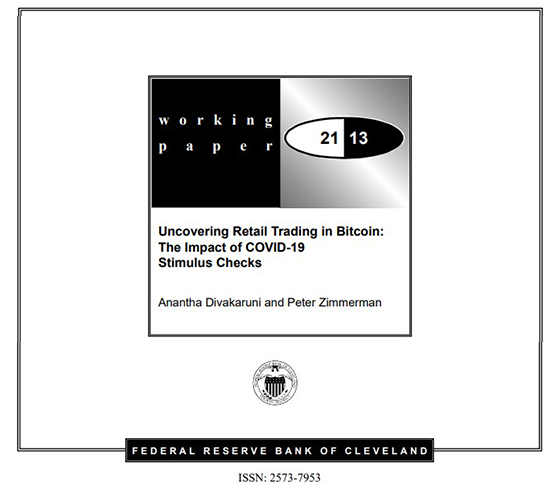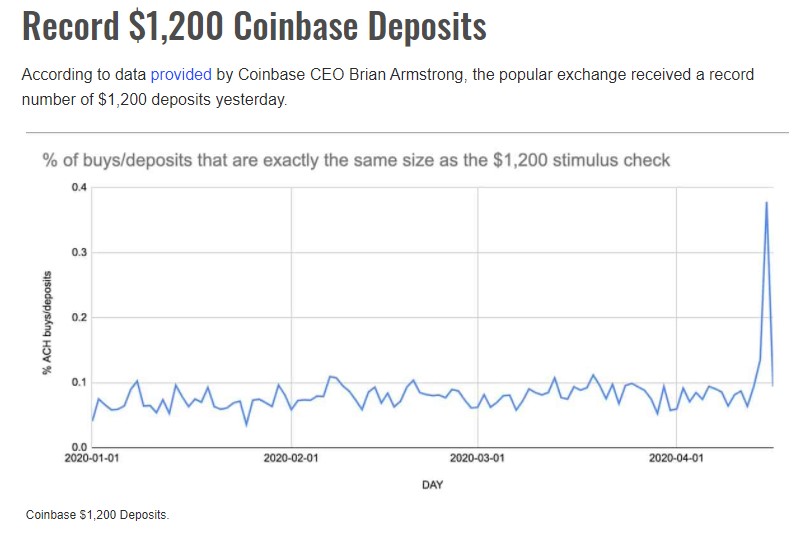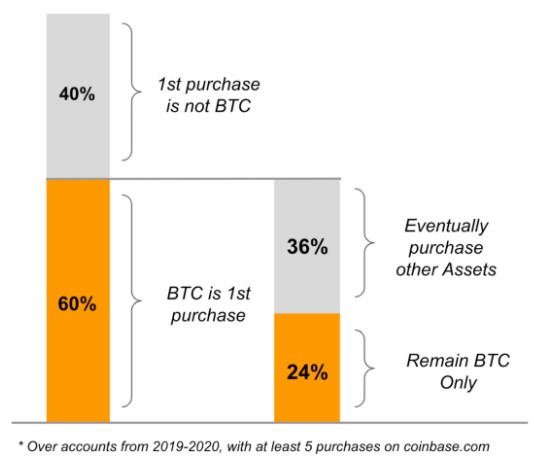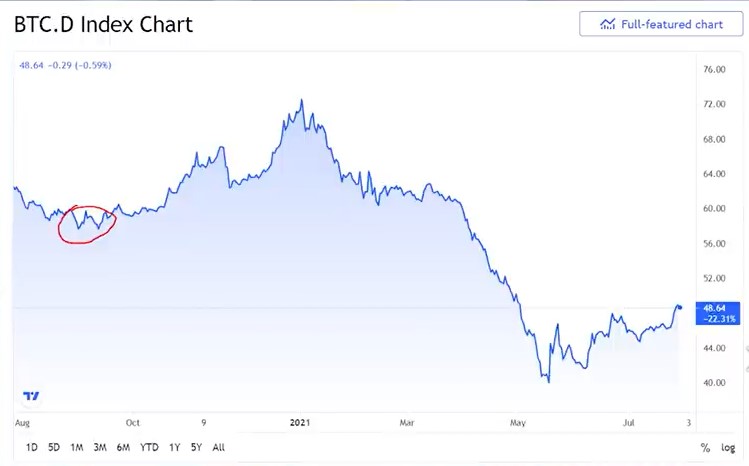
Stimulus Payments - How Much Went Into Bitcoin?

What About Altcoins? Surprising Results
Last year, we saw governments across the globe dole out billions of dollars to their citizens in an attempt to offset some of the economic impacts of the pandemic lockdowns. While that money was intended for food and rent, some of it managed to find its way into the crypto market.
This has led many to wonder just how big of an impact all those stimulus checks, otherwise labeled Economic Impact Payments (EIP), have had on the crypto market. The United States Federal Reserve has also been wondering the same thing, so they recently published a study with surprising results and even more surprising regulatory recommendations.
The study was conducted by the Federal Reserve Bank Of Cleveland, specifically, which is one of the 12 Regional Banks which collectively make up the Federal Reserve System in the United States. The Federal Reserve is the privately held independent entity within the US government which issues federal reserve notes, also known as US Dollars.
The Federal Reserve Bank of Cleveland differs from the other Fed branches in that it is the only one that handles collections for the US Department of the treasury. In other words, they provide the payment system that the US government uses to collect taxes and pay back government debt. This seems to include any payments made by individuals or institutions to the US government.
The Federal Reserve Bank of Cleveland also supports the treasury's objective of expanding the use of digital products and payment services across the federal government, as quoted on their website. It’s not surprising that many of its constituents are interested in crypto. Two of them recently released the study, Uncovering Retail Trading in Bitcoin the Impact of COVID-19 Stimulus Checks.

In contrast to academic studies, this Fed study is technically a working paper that is circulated among all Federal Reserve officials to discuss, according to the second page of the paper. So with all this context in mind, let's take a look.
First Section Of The Study
The first section of the Fed's stimulus study lays the groundwork for the entire paper. It starts by noting that the Fed was inspired to analyze the effects of stimulus checks on the crypto market after data released by Coinbase, CEO Brian Armstrong in mid-April of 2020, featuring an image which shows that there's a massive spike in buy orders and deposits on Coinbase in the $1,200 range.

Who Was Eligible?
As explained in the second section of the Fed study, every adult in the United States that earns less than $75K per year was eligible to receive a no-strings-attached stimulus payment for $1,200. Those making between $75K and $99K per year were still eligible to receive some, but this amount approaches zero as their income approaches the upper-income limit.
Given that the median salary in the United States is only around $36k, the vast majority of adults were eligible to receive some helicopter money, and seven out of ten received their Economic Impact Payment (EIP) by the end of May 2020.
This totaled nearly $270 billion, which was just 10% of the over $2 trillion the CARES Act eventually pumped into the US economy. Around that time, both the stock market and the crypto Market accelerated their recoveries from the massive crash in early March, which is believed to have been caused by the World Health Organization's announcement that a pandemic was indeed upon us.
Interestingly, the rally out of the slump began long before the EIPs started being sent out. The Fed believes that the mere announcement of monetary measures was enough to jump-start the recovery in asset markets. Although there have been two more rounds of stimulus payments since last year, the Fed's working paper only focuses on the first round of stimulus, which went out in March of 2020.
Methods Used To Determine Effect
The third section of the FED study details the methods they used to determine how much of an effect the stimulus checks from last spring had on the price of Bitcoin. First, the Fed took trading data from Kaiko, a crypto data research company, about BTC buy orders on 26 cryptocurrency exchanges between January 1st and June 5th, 2020. Then they identified any buy orders at the $1,200 range and divided the initial time frame into two periods, January 1st to April 9th, and April 9th to June 5th.
They did this because the first round of stimulus checks was sent out on April 9th, and the remainder were distributed in the weeks that followed. Logically, the Fed predicted that there would be more $1,200 BTC buy orders between April and June than between January and April. The number of these orders could then estimate how much of that money was invested into Bitcoin.
It stands to reason there are many confounding variables like multiple price points besides the $1200, where retail investors only invested a portion of their stimulus checks. They pointed out people with children are unlikely to invest in speculative assets. They highlighted the fact that most cryptocurrency investors tend to be young and single, among other variables. Still, overall the Fed actually did a pretty good job of accounting for most of them.
Significant Findings
The 4th, 5th, and 6th sections of the Fed study reveal results for their various hypotheses in detail; however, how the last findings related to the impact of the EIPs on the price of Bitcoin are nowhere close to the magnitude that you'd expect. Of the nearly 270 billion dollars of stimulus money sent out to Americans, only about $58 million found its way into Bitcoin between April 9th and June 5th.
Now, this might sound like a lot, but it's barely enough to push up the price of BTC by 5% on a single cryptocurrency exchange, much less the entire crypto market. According to the Fed, stimulus payments only accounted for 3.8% of BTC trades by number and 0.7% of trades by value during that time.
In terms of the actual price, all the buy orders they analyzed, $1200, $1000, $600, $500, and $100, only managed to push up the price of Bitcoin by 0.22% between April 9th and June 5th. When you isolate the $1,200 payments, that BTC price pump drops to just 0.05%. So it just goes to show you that there are much bigger things that move the crypto market.
The Main Takeaways
The last section of the Fed’s stimulus study lays out a few conclusions and some regulatory recommendations for future stimulus programs. The main takeaway is that only 0.02% of all stimulus checks were spent on bitcoin: Ascertaining that,
“Policymakers should not be concerned about money being diverted to cryptocurrency markets when considering similar economic relief programs in the future.”
It’s good news they came to this conclusion, but these findings are only pertaining to BTC. Bitcoin is just one of many cryptocurrencies that make up the crypto market and, these days, doesn't account for the majority share by market cap.
What About Altcoins?
It's possible that some of last year's stimulus money ended up in altcoins, and arguably the amount is probably more significant than the $58 million that went into Bitcoin. Considerable evidence for this is a study conducted by Coinbase in May 2020 which found that 40% of retail investors buy altcoins instead of Bitcoin, and more than half of those who purchase Bitcoin buy altcoins eventually.

As shown in the chart above, the Coinbase study indicates a whopping 76% of crypto investors ultimately put their money into altcoins. Unlike BTC, which requires tens of millions of dollars to change its price on any given day, it’s often the case that even just a few hundred thousand dollars is more than enough to move an altcoin up or down by double-digit percentages.
Bitcoin does carry the flag for the crypto space universally, as the store of value for all cryptos, much like gold was when it backed fiat currency. However, although some retail investors cut their teeth with Bitcoin, they are branching into other assets with prominent use-cases that provide differentiated services.
Therefore stimulus-driven investing could have had a significant impact on the price of select altcoins while having a negligible effect on Bitcoins price. Cardano’s ADA has soared over the past few months, holding firm in the dip of many cryptos, including Bitcoin.

Further evidence for stimulus-driven altcoin investing was the Bitcoin dominance chart when there was a significant dip in Bitcoin dominance in April, which is precisely when the bulk of those stimulus payments were sent out.
Correlation certainly doesn't equal causation, but it's pretty clear that the average retail investor of today realizes the importance and utility some altcoins have with emerging technology, providing much-needed solutions to issues that have arisen within the industry and externally.
Of all the crypto reports and studies out there, this one is probably the most significant. Besides the fact that the United States Federal Reserve conducted it, it underscores just how small of an effect retail money has on the price of Bitcoin. To move a trillion-dollar asset, you need trillions of dollars, and that's something the average person doesn't have.
There are golden opportunities in the altcoin market the average retail investor can afford. When you think about the billions of people on social media and the swarms of digital media, marketing, and advertising on the internet, a decentralized blockchain project in this space is the ticket and answer to the social and financial issues experienced in today’s climate.

Markethive - The Answer
With crypto smarts and not-so-crypto-savvy, many retail investors are coming to Markethive and supporting the social media and digital marketing network. Why? Because they are looking for a platform that promotes freedom and sovereignty. A place where entrepreneurs can flourish professionally, artistically, and financially, away from the pressures of the legacy Web 2 tech giants.
Never before has a blockchain crypto project been attempted at this scale, but given the distributed data technology Markethive is integrating, it’s the next step in the evolution of multi-dimensional social media, marketing, and advertising.
Markethive’s Hivecoin is one of the select altcoins that will rise and empower the retail investor. Its use case is the pinnacle and essential for this fungible asset coin to become very valuable to any user in the social media, marketing, and digital media industry.
The various ways to earn Hivecoin, including airdrops, bounties, and staking capabilities, make it easy to accumulate and grow your portfolio. The added advantage of Markethive’s decentralized exchange and wallet soon to be released creates a robust, thriving ecosystem for the average Jack and Jill - The aspiring entrepreneur and retail investor.
Stimulus Payments - How Much Went Into Bitcoin?: Stimulus Payments - How Much Went Into Bitcoin? ...




No comments:
Post a Comment